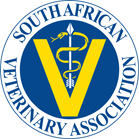Original Research
Efficacy of parenteral administration of ivermectin in the control of strongylidosis in donkeys
Journal of the South African Veterinary Association | Vol 76, No 4 | a429 |
DOI: https://doi.org/10.4102/jsava.v76i4.429
| © 2005 R. Binev, Z. Kirkova, J. Nikolov, A. Russenov, K. Stojanchev, L. Lazarov, T. Hristov
| This work is licensed under CC Attribution 4.0
Submitted: 15 June 2005 | Published: 15 June 2005
Submitted: 15 June 2005 | Published: 15 June 2005
About the author(s)
R. Binev,Z. Kirkova,
J. Nikolov,
A. Russenov,
K. Stojanchev,
L. Lazarov,
T. Hristov,
Full Text:
PDF (146KB)Abstract
Investigations into the efficacy of parenteral ivermectin (Pandex) administration for strongylidosis control in donkeys were carried out. The preparation was applied subcutaneously at a dose of 0.2 mg / kg (1mℓ / 50 kg body weight). One day prior to the treatment and 14 days post-treatment, individual coprological samples were obtained for faecal nematode egg counts and larval culture. The study was performed on 263 donkeys originating from different regions of Bulgaria. Prior to the treatment and 20 days after that, blood samples were obtained from 64 previously infected animals for monitoring of changes in eosinophil leukocyte counts. The subcutaneous application of ivermectin had an efficacy of 96 % in terms of reduction of faecal egg counts. In 92.2%of infected donkeys, a complete reduction of faecal eggs count occurred (0 eggs per gram of faeces epg), whereas in the remaining 7.8%of the infected donkeys, the egg counts were reduced by 72 %. The reduction in faecal egg counts did not result in changes in eosinophil counts. The results obtained as well as the lack of local changes after the subcutaneous application of ivermectin in donkeys allow us to recommend its use for control of strongyles in donkeys.
Keywords
Donkeys; Faecal Eggs Counts; Ivermectin (Pandex); Strongylidosis
Metrics
Total abstract views: 3095Total article views: 2847
Crossref Citations
1. Cyathostominae Egg Reappearance Period After Treatment With Major Horse Anthelmintics in Donkeys
Francesco Buono, Cristina Roncoroni, Laura Pacifico, Diego Piantedosi, Benedetto Neola, Vittoria Lucia Barile, Antonio Fagiolo, Marián Várady, Vincenzo Veneziano
Journal of Equine Veterinary Science vol: 65 first page: 6 year: 2018
doi: 10.1016/j.jevs.2018.02.018
